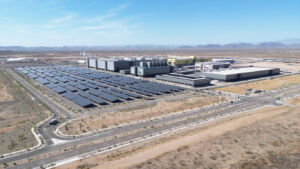If you’re running a solar business or investing in clean energy, what should you pay attention to in 2025?
That’s the real question behind every industry forecast, product launch, or policy announcement. Solar is no longer in its early growth phase. It’s rising as an infrastructure. The challenge now isn’t just about entering the market, it’s more about moving with precision and strategy.
Let’s outline the most important developments shaping solar and the role of emerging technologies and incentives.
Why 2025 is a Critical Year for Solar Businesses?
There’s been talk of solar’s rise for years. So why is 2025 different?
The short answer is that the stakes are higher, and the conditions more favorable, as consumers are inclined towards renewable energy resources, shaping trends in the market.
- Policy pressure is increasing as governments worldwide are focused on mandating renewable energy sources.
- Technology costs are reaching points that make high-efficiency solar accessible across sectors, making it a cost-effective option.
- The energy market is changing, and utilities are no longer the only serious players in energy generation.
LOCAL NEWS: 100 best places to work and live in Arizona for 2025
Three Technology Shifts You Can’t Ignore
Innovation is changing how solar systems work, how they’re sold, and what customers expect from them.
Integration of AI and IoT
The integration of Artificial Intelligence (AI) and Internet of Things (IoT) technology is pushing solar business software into a new era of intelligence and responsiveness.
Instead of simply generating power, modern solar setups are now learning, adapting, and self-optimizing.
AI is being used to analyze performance data, forecast production based on weather patterns, and even flag maintenance issues before they turn into costly breakdowns.
At the same time, IoT devices such as connected sensors, meters, and controllers provide real-time visibility into system behavior, allowing both users and operators to make faster, better-informed decisions.
Together, AI and IoT are transforming solar installations from passive energy generators into active, self-managed systems, reducing downtime, improving stability, and making energy use more efficient at every level.
Advanced Field Operations
As solar systems become more complex, managing field operations efficiently has become just as important as the technology itself. That’s where modern field service management software is making a measurable impact.
Field service management software is transforming how solar companies plan, execute, and track their field activities, from installations to maintenance.
With real-time scheduling, route optimization, digital checklists, and real-time tracking, businesses can reduce delays, cut operational costs, and boost overall service quality.
For field teams, this means fewer manual steps, quicker issue resolution, and clear communication from dispatch to delivery. For customers, it results in a more transparent and timely service experience.
Advanced Photovoltaic (PV) Technology
Solar panel efficiency is actively pushed forward by breakthroughs in photovoltaic (PV) technology. Currently, the focus isn’t just on installing more panels, but on making each panel smarter, smaller, and more productive.
Manufacturers are beginning to integrate high-performance materials like perovskites into next-generation solar cells. These materials show strong potential to achieve efficiency rates, meaning they can generate significantly more power from the same surface area.
As production techniques mature, these panels could make solar viable even in space-constrained environments.
The Role of Incentives
Financial incentives are a key driver behind the adoption and expansion of solar energy. As of now, lowered initial installation costs and improved return on investment make solar power more financially attractive for both individuals and businesses.
These programs help remove economic barriers, allowing a broader range of users to participate in the transition to clean energy.
What’s changing?
- Some national programs provide subsidies, increasing the demand for solar energy consumption.
- Private-sector incentives, especially from utilities and green finance groups, are increasingly important in funding and adoption.
- Compliance matters more now. The benefits are there, but they come with tighter eligibility and reporting requirements.
What does this mean for solar businesses?
It’s not enough to know incentives exist. You need to understand how to align your offerings and operations to qualify for them and how to help your customers do the same.
If you’re not tracking the funding structures in your core markets, you’re likely leaving margin on the table.
Business Models and Markets to Watch for Growth
Not every opportunity in solar will look like a panel sale. In modern times, growth will come from:
- Franchising and licensing models that allow regional businesses to scale without heavy CAPEX.
- Community solar projects, especially in urban and multifamily settings.
Another important aspect to notice is that investors are shifting. ESG capital is being more selectively deployed, favoring businesses with strong execution models, smart use of tech, and transparency on impact.
Final Take
The future of solar is here and several strategies are being implemented in the industry for advancement. But, the form it takes for your business will depend on how you read the trends, how well you align with incentives, and how quickly you adapt to technology.
If you’re in this industry or looking to enter it, this is the year to get strategic, get informed, and build systems that aren’t just current, but ready for what’s next.




